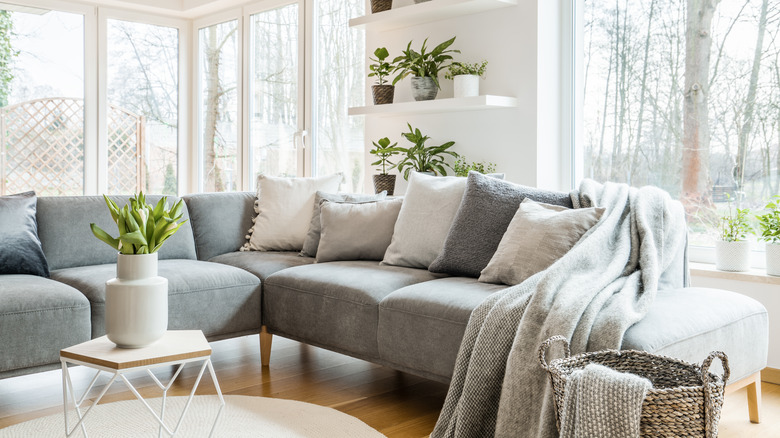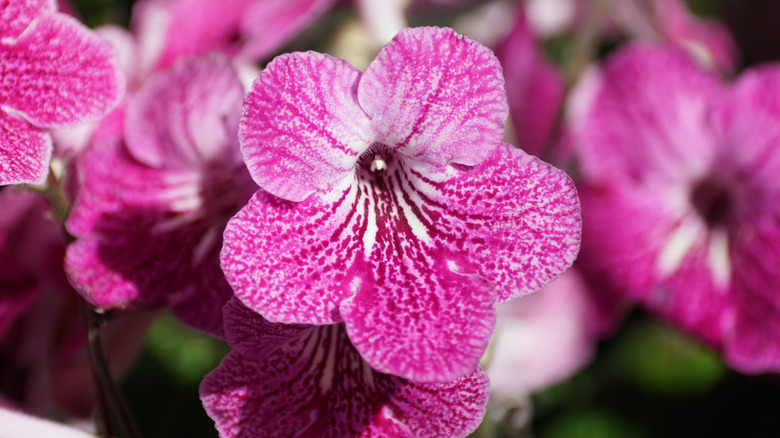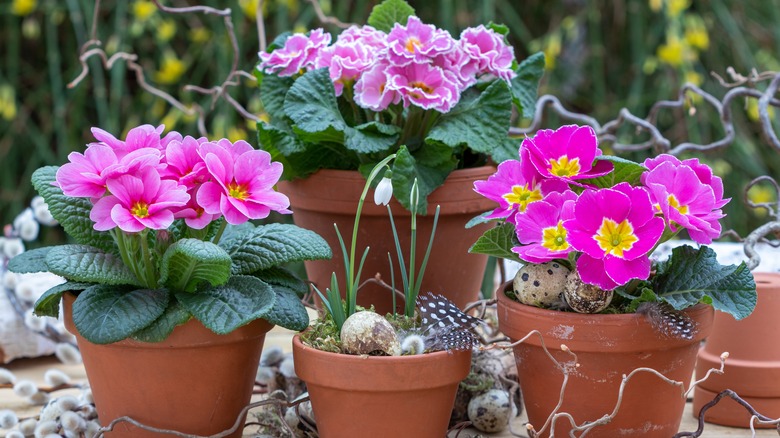The Easy-To-Grow Indoor Flowering Plant That'll Bloom In Your Home Year-Round
Cape primrose (Streptocarpus saxorum) is an easy-to-grow indoor flowering plant that could be the next gorgeous addition to your indoor garden. While the Cape primrose is just one of the many low-maintenance perennials that bloom indoors, they are a great choice for beginners because they can bloom almost all year, even in the winter months. Of course, you will want to provide them with ideal growing conditions, including quality soil, lighting, regular water, and consistent temperature. But you will be amazed by how easy it is to get it right.
Another great benefit to growing this flower indoors for year-round blooms is that there are almost no major concerns to worry about. Root disease and leaf care are the primary issues that Cape primrose flowers may bring to your indoor flower garden, but there are simple strategies to easily avoid them. The only other major concern that gardeners face when growing primrose plants is pests, which are (mostly) controlled by the indoor environment. So if you're new to indoor gardening, or you just want something pretty and long-lasting that doesn't take much effort, the Cape primrose may just be the plant for you.
Low-maintenance Cape primrose care for indoor year-round blooms
Learning how to grow and care for primrose plants is simple and quick. You won't need to do any fancy chemistry with the soil or intensive pruning. In fact, you will want to avoid excessive fertilizing – if you do any at all — because high salt content or moisture control products in the soil can damage your plant. All you really need is an organic potting mix that accounts for drainage.
You also don't need to pay much attention to the best window to put your Cape primrose in because they bloom in low-light conditions. That means that you won't need to rotate the placement either. Just place them somewhere that doesn't get sustained, direct light, and those pink flowers will grow beautifully indoors.
The water and temperature conditions for Cape primrose are easy to control as well. They grow well in temperatures between 60 and 75 degrees Fahrenheit, which is pretty standard indoor conditions for most homes anyway. All you need to do is make sure you don't place them next to a heating or cooling vent with direct airflow, and they will do fine. There is no hard and fast rule for how often to water Cape primrose because it depends heavily on the humidity in the home and the actual light conditions. Water when necessary to keep the soil moist, but avoid wet or soggy conditions. If you touch the soil and it feels dry, add enough water to darken the color of the soil without leaving standing water in the pot.
Common concerns when growing Cape primrose indoors (and how to avoid them)
No matter how easy it is to care for these flowers indoors, you will always want to be aware of any potential concerns. But don't worry, Cape primrose has very few issues, and they are simple to avoid. The main concern is usually root disease. Most commonly, the roots of the plant rot or become infected when the soil is too moist. Following all of the recommendations above regarding soil care, watering, and temperature control are the first steps to avoiding root rot and disease. Getting a pot that allows water to drain from the bottom is another great way to keep the roots in excellent condition.
The leaves can also get damaged for a variety of reasons, such as overwatering, direct sunlight, or pests. Remove old stems and leaves by pinching them off at the base. If leaves seem soggy at the base, they are getting too much water, and you may have rot issues. On the contrary, if they are wilting, they may be too hot or not getting enough water. Adjust water and temperature levels accordingly. When growing them indoors, you won't have to worry about outdoor pests like beetles that eat the roots. However, you may still encounter smaller pests like aphids or mites. If the leaves appear to grow inconsistently or have spots or browning, you might have pests. Segregate the plant from nearby plants and treat the leaves with neem oil or another pest control treatment of your choice.


